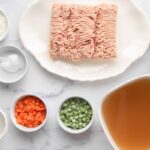What Are High Protein Low Calorie Foods? Discover a world of nutritious and delicious options at FOODS.EDU.VN to fuel your body without the extra calories. This comprehensive guide will illuminate the best choices, helping you achieve your dietary goals. You’ll find information on healthy eating, dietary protein, and weight management.
1. Understanding High Protein Low Calorie Foods
The quest for a healthy lifestyle often leads to the intersection of high protein and low calorie foods. These are foods that provide a significant amount of protein while keeping the calorie count minimal. This combination is incredibly beneficial for weight management, muscle building, and overall health. But why is this combination so sought after?
Protein is essential for numerous bodily functions, including building and repairing tissues, producing enzymes and hormones, and supporting the immune system. Consuming enough protein helps you feel full and satisfied, reducing the likelihood of overeating. Low calorie foods, on the other hand, help you maintain a calorie deficit, which is crucial for weight loss. Combining these two elements can be a game-changer for your diet.
1.1. Benefits of a High Protein Low Calorie Diet
A diet rich in high protein low calorie foods offers a multitude of benefits. These benefits extend beyond just weight loss and include improved muscle mass, better appetite control, and enhanced metabolic health.
- Weight Management: High protein foods increase satiety, helping you eat less overall. Low calorie content ensures you’re consuming fewer calories than you burn, leading to weight loss.
- Muscle Building: Protein is the building block of muscles. Consuming adequate protein supports muscle growth and repair, especially when combined with resistance training.
- Appetite Control: Protein helps stabilize blood sugar levels and reduces cravings, making it easier to stick to your dietary goals.
- Metabolic Health: Some studies suggest that high protein diets can improve metabolic markers such as blood pressure, cholesterol levels, and blood sugar control.
1.2. Who Can Benefit from This Diet?
This type of diet is beneficial for a wide range of individuals, from athletes looking to optimize performance to individuals seeking to manage their weight or improve their overall health.
- Athletes: Athletes need more protein to support muscle growth and repair. A high protein low calorie diet helps them meet their protein needs without excess calories.
- Individuals Trying to Lose Weight: This diet supports weight loss by promoting satiety and reducing overall calorie intake.
- People with Diabetes: High protein diets can help regulate blood sugar levels, which is beneficial for individuals with diabetes.
- Older Adults: As we age, we lose muscle mass. Consuming enough protein helps preserve muscle mass and maintain physical function.
2. Top High Protein Low Calorie Food Choices
Now that we understand the benefits, let’s dive into the best high protein low calorie food choices. These options are not only nutritious but also versatile and easy to incorporate into your daily meals.
2.1. Animal-Based Protein Sources
Animal-based protein sources are typically complete proteins, meaning they contain all nine essential amino acids. They are also highly bioavailable, making them easily absorbed and utilized by the body.
2.1.1. Chicken Breast
Chicken breast is a classic choice for those seeking lean protein. A 3.5-ounce serving (about 100 grams) of skinless chicken breast contains approximately 31 grams of protein and only around 165 calories.
- Nutritional Benefits: Rich in niacin, selenium, and vitamin B6.
- Preparation Tips: Grill, bake, or air fry to keep the calorie count low. Avoid frying or adding high-calorie sauces.
- Recipe Ideas: Chicken salads, stir-fries, and grilled chicken with vegetables.
2.1.2. Turkey Breast
Similar to chicken, turkey breast is another excellent source of lean protein. A 3.5-ounce serving provides about 30 grams of protein and around 157 calories.
- Nutritional Benefits: Contains tryptophan, an amino acid that can improve mood and sleep.
- Preparation Tips: Roast, grill, or use in sandwiches and salads.
- Recipe Ideas: Turkey burgers, turkey meatballs, and turkey lettuce wraps.
2.1.3. White Fish (Cod, Haddock)
White fish like cod and haddock are naturally low in calories and high in protein. A 3.5-ounce serving of cod contains approximately 20 grams of protein and only about 90 calories.
- Nutritional Benefits: Rich in omega-3 fatty acids, which are beneficial for heart health.
- Preparation Tips: Bake, steam, or grill. Avoid frying or using creamy sauces.
- Recipe Ideas: Baked cod with lemon and herbs, fish tacos, and fish soup.
2.1.4. Canned Tuna (in Water)
Canned tuna in water is a convenient and affordable protein source. A 3.5-ounce serving contains around 25 grams of protein and about 99 calories.
- Nutritional Benefits: Contains omega-3 fatty acids and selenium.
- Preparation Tips: Choose tuna packed in water rather than oil to reduce calories.
- Recipe Ideas: Tuna salad, tuna melts, and tuna pasta.
2.1.5. Greek Yogurt
Greek yogurt is a creamy and versatile dairy product packed with protein. A 7-ounce (200-gram) serving of non-fat Greek yogurt contains about 20 grams of protein and around 150 calories.
- Nutritional Benefits: Rich in probiotics, which support gut health.
- Preparation Tips: Choose plain, non-fat varieties to avoid added sugars and fats.
- Recipe Ideas: Yogurt parfaits, smoothies, and as a topping for fruits and granola.
2.1.6. Cottage Cheese
Cottage cheese is another excellent dairy option, providing a good amount of protein with a low calorie count. A half-cup serving (about 113 grams) contains approximately 12 grams of protein and around 80 calories.
- Nutritional Benefits: Good source of calcium, B vitamins, and phosphorus.
- Preparation Tips: Enjoy with fruits, vegetables, or in baking recipes.
- Recipe Ideas: Cottage cheese with berries, cottage cheese pancakes, and cottage cheese salad.
2.1.7. Egg Whites
Egg whites are almost pure protein and very low in calories. One large egg white contains about 3.6 grams of protein and only around 17 calories.
- Nutritional Benefits: Rich in riboflavin and selenium.
- Preparation Tips: Use in omelets, frittatas, or as a protein boost in smoothies.
- Recipe Ideas: Egg white omelets, egg white muffins, and meringue.
2.1.8. Prawns (Shrimp)
Prawns are a delicious and nutritious seafood option. A 3.5-ounce serving contains approximately 20 grams of protein and only about 85 calories.
- Nutritional Benefits: High in selenium, vitamin B12, and iodine.
- Preparation Tips: Grill, steam, or stir-fry. Avoid frying or using creamy sauces.
- Recipe Ideas: Shrimp scampi, shrimp stir-fry, and shrimp tacos.
2.1.9. Pork Loin
Pork loin is a lean cut of pork that can be a good addition to a high protein low calorie diet. A 3-ounce serving contains approximately 26 grams of protein and around 140 calories.
- Nutritional Benefits: Rich in thiamine, niacin, and vitamin B6.
- Preparation Tips: Bake, grill, or roast. Trim excess fat before cooking.
- Recipe Ideas: Pork tenderloin with roasted vegetables, pork chops, and pork stir-fry.
2.1.10. Skimmed or Semi-Skimmed Milk
Skimmed or semi-skimmed milk is a good source of protein and calcium with fewer calories than whole milk. One cup of skimmed milk contains about 8 grams of protein and around 80 calories.
- Nutritional Benefits: Rich in calcium and vitamin D.
- Preparation Tips: Use in smoothies, coffee, or as a beverage.
- Recipe Ideas: Protein shakes, oatmeal with milk, and milk-based soups.
2.2. Plant-Based Protein Sources
Plant-based protein sources are excellent options for vegetarians, vegans, and anyone looking to reduce their meat consumption. While some plant-based proteins are not complete, combining different sources can ensure you get all the essential amino acids.
2.2.1. Lentils
Lentils are a nutritional powerhouse, packed with protein, fiber, and essential nutrients. A cup of cooked lentils contains about 18 grams of protein and around 230 calories.
- Nutritional Benefits: High in iron, folate, and potassium.
- Preparation Tips: Cook in soups, stews, or salads.
- Recipe Ideas: Lentil soup, lentil curry, and lentil salad.
2.2.2. Beans (Black, Kidney, Cannellini)
Beans are another excellent plant-based protein source, providing a good amount of protein and fiber. A cup of cooked black beans contains about 15 grams of protein and around 220 calories.
- Nutritional Benefits: Rich in fiber, iron, and folate.
- Preparation Tips: Use in soups, stews, salads, and as a meat substitute.
- Recipe Ideas: Black bean burgers, chili, and bean salads.
2.2.3. Tofu
Tofu is a versatile soy-based protein source that is popular among vegetarians and vegans. A 3.5-ounce serving contains about 8 grams of protein and around 70 calories.
- Nutritional Benefits: Contains all nine essential amino acids.
- Preparation Tips: Marinate and bake, stir-fry, or use in smoothies.
- Recipe Ideas: Tofu stir-fry, tofu scramble, and silken tofu pudding.
2.2.4. Edamame
Edamame, or immature soybeans, are a great source of plant-based protein and fiber. A half-cup serving contains about 8 grams of protein and around 120 calories.
- Nutritional Benefits: Rich in vitamins and minerals, including vitamin K and folate.
- Preparation Tips: Steam, boil, or add to salads and stir-fries.
- Recipe Ideas: Steamed edamame with sea salt, edamame salad, and edamame stir-fry.
2.2.5. Quinoa
Quinoa is a complete protein source and a great alternative to rice or other grains. A cup of cooked quinoa contains about 8 grams of protein and around 222 calories.
- Nutritional Benefits: Rich in iron, magnesium, and fiber.
- Preparation Tips: Cook as a side dish, add to salads, or use in breakfast bowls.
- Recipe Ideas: Quinoa salad, quinoa bowls, and quinoa porridge.
2.2.6. Green Peas
Green peas are a surprisingly good source of plant-based protein. A cup of cooked peas contains about 8 grams of protein and around 134 calories.
- Nutritional Benefits: Rich in vitamins A, C, and K, as well as fiber.
- Preparation Tips: Add to soups, stews, salads, or enjoy as a side dish.
- Recipe Ideas: Pea soup, pea and mint salad, and pea risotto.
2.2.7. Chickpeas
Chickpeas are a versatile legume that can be used in a variety of dishes. A cup of cooked chickpeas contains about 15 grams of protein and around 270 calories.
- Nutritional Benefits: Rich in fiber, iron, and folate.
- Preparation Tips: Use in hummus, salads, soups, and as a snack.
- Recipe Ideas: Hummus, chickpea salad, and roasted chickpeas.
2.2.8. Spirulina
Spirulina is a blue-green algae that is incredibly high in protein. A tablespoon contains about 4 grams of protein and only around 20 calories.
- Nutritional Benefits: Rich in antioxidants and anti-inflammatory compounds.
- Preparation Tips: Add to smoothies, juices, or sprinkle on salads.
- Recipe Ideas: Green smoothies, spirulina bowls, and spirulina energy bites.
2.3. Other Protein Sources
2.3.1. Low-Calorie Protein Powder
Low-calorie protein powder is a convenient way to boost your protein intake without adding many calories. The nutritional content varies by brand, but most servings contain around 20-30 grams of protein and 100-150 calories.
- Nutritional Benefits: Varies by brand, but typically rich in essential amino acids.
- Preparation Tips: Mix with water, milk, or add to smoothies and recipes.
- Recipe Ideas: Protein shakes, protein pancakes, and protein muffins.
2.3.2. Squid
Squid is a lean seafood option that is high in protein and low in calories. A 3.5-ounce serving contains approximately 18 grams of protein and only about 80 calories.
- Nutritional Benefits: Good source of vitamin B12 and selenium.
- Preparation Tips: Grill, boil, or stir-fry. Avoid frying or using heavy sauces.
- Recipe Ideas: Grilled squid salad, seafood stew, and squid stir-fry.
3. Incorporating High Protein Low Calorie Foods into Your Diet
Now that you know the best high protein low calorie food choices, let’s discuss how to incorporate them into your daily diet. The key is to create balanced meals and snacks that provide adequate protein without excess calories.
3.1. Sample Meal Plans
Here are a few sample meal plans to give you an idea of how to structure your high protein low calorie diet:
3.1.1. Sample Meal Plan 1
- Breakfast: Greek yogurt with berries and a sprinkle of nuts (25g protein, 250 calories)
- Lunch: Grilled chicken salad with mixed greens and a light vinaigrette (40g protein, 350 calories)
- Snack: Cottage cheese with sliced cucumber (15g protein, 100 calories)
- Dinner: Baked cod with steamed vegetables (30g protein, 300 calories)
Total: 110g protein, 1000 calories
3.1.2. Sample Meal Plan 2
- Breakfast: Protein smoothie with spinach, banana, and protein powder (30g protein, 250 calories)
- Lunch: Lentil soup with a side salad (20g protein, 300 calories)
- Snack: Hard-boiled egg (6g protein, 70 calories)
- Dinner: Tofu stir-fry with brown rice and mixed vegetables (25g protein, 350 calories)
Total: 81g protein, 970 calories
3.1.3. Sample Meal Plan 3
- Breakfast: Egg white omelet with spinach and tomatoes (20g protein, 150 calories)
- Lunch: Turkey breast sandwich on whole-grain bread with lettuce and tomato (35g protein, 300 calories)
- Snack: Edamame (8g protein, 120 calories)
- Dinner: Pork loin with roasted asparagus (30g protein, 350 calories)
Total: 93g protein, 920 calories
3.2. Easy Swaps to Reduce Calories and Increase Protein
Making small changes to your diet can make a big difference in your calorie and protein intake. Here are some easy swaps to consider:
- Swap: Regular yogurt for Greek yogurt
- Benefit: Increase protein, reduce sugar
- Swap: Ground beef for ground turkey
- Benefit: Reduce fat, maintain protein
- Swap: White rice for quinoa
- Benefit: Increase protein and fiber
- Swap: Creamy salad dressings for vinaigrette
- Benefit: Reduce calories and fat
- Swap: Sugary snacks for protein bars or nuts
- Benefit: Increase protein, reduce sugar
3.3. Tips for Sticking to Your Diet
Sticking to a high protein low calorie diet requires planning, preparation, and commitment. Here are some tips to help you stay on track:
- Plan Your Meals: Plan your meals in advance to ensure you have healthy options available.
- Prepare Your Food: Prepare your food ahead of time to avoid unhealthy impulse choices.
- Track Your Intake: Use a food diary or app to track your calorie and protein intake.
- Stay Hydrated: Drink plenty of water to help you feel full and support your metabolism.
- Get Enough Sleep: Sleep deprivation can lead to increased cravings and poor food choices.
- Find a Support System: Enlist the help of friends, family, or a registered dietitian to stay motivated.
4. Addressing Common Concerns
While a high protein low calorie diet is generally safe and effective, some people may have concerns or questions about it. Let’s address some common concerns.
4.1. Is Too Much Protein Bad for You?
Consuming excessive amounts of protein can put a strain on your kidneys, especially if you have pre-existing kidney problems. However, for most healthy individuals, consuming moderate to high amounts of protein is not harmful. It’s important to stay hydrated and maintain a balanced diet.
4.2. Can This Diet Lead to Nutrient Deficiencies?
If not planned carefully, a high protein low calorie diet can lead to nutrient deficiencies, especially if you are restricting entire food groups. To avoid this, make sure you are consuming a variety of nutrient-dense foods, including fruits, vegetables, whole grains, and healthy fats.
4.3. Is This Diet Sustainable Long-Term?
Sustainability is key to any successful diet. While a high protein low calorie diet can be effective for weight loss, it’s important to ensure that it fits your lifestyle and preferences. Consider working with a registered dietitian to create a sustainable meal plan that meets your individual needs.
5. Delicious High Protein Low Calorie Recipes
To make your high protein low calorie journey more enjoyable, here are some delicious recipes to try:
5.1. Grilled Chicken and Avocado Salad
Ingredients:
- 4 oz grilled chicken breast
- 1/2 avocado, sliced
- 2 cups mixed greens
- 1/4 cup cherry tomatoes, halved
- 2 tbsp light vinaigrette
Instructions:
- Combine mixed greens, cherry tomatoes, and avocado in a bowl.
- Top with grilled chicken breast.
- Drizzle with light vinaigrette.
Nutritional Information: Approximately 350 calories, 35g protein
5.2. Lentil Soup
Ingredients:
- 1 cup lentils
- 4 cups vegetable broth
- 1 onion, chopped
- 2 carrots, chopped
- 2 celery stalks, chopped
- 1 tsp cumin
- Salt and pepper to taste
Instructions:
- Combine all ingredients in a pot.
- Bring to a boil, then reduce heat and simmer for 30-40 minutes, or until lentils are tender.
- Season with salt and pepper to taste.
Nutritional Information: Approximately 250 calories, 18g protein
5.3. Tofu Stir-Fry
Ingredients:
- 4 oz tofu, pressed and cubed
- 1 cup mixed vegetables (broccoli, carrots, bell peppers)
- 2 tbsp soy sauce
- 1 tbsp sesame oil
- 1 tsp ginger, minced
- 1 clove garlic, minced
Instructions:
- Heat sesame oil in a pan.
- Add tofu and stir-fry until golden brown.
- Add vegetables, ginger, and garlic, and stir-fry for 5-7 minutes.
- Stir in soy sauce and cook for another minute.
Nutritional Information: Approximately 300 calories, 20g protein
5.4. Greek Yogurt Parfait
Ingredients:
- 1 cup non-fat Greek yogurt
- 1/2 cup berries
- 1/4 cup granola
Instructions:
- Layer Greek yogurt, berries, and granola in a glass.
- Repeat layers as desired.
Nutritional Information: Approximately 200 calories, 20g protein
6. Expert Insights and Scientific Backing
The recommendations provided in this guide are supported by expert insights and scientific research.
6.1. Nutritional Guidelines
According to the Dietary Guidelines for Americans, adults should aim to consume 0.8 grams of protein per kilogram of body weight per day. This translates to about 56 grams of protein for a 70-kilogram (154-pound) person. However, individuals who are active or trying to lose weight may benefit from consuming more protein.
6.2. Scientific Studies
Numerous studies have shown the benefits of high protein diets for weight loss, muscle building, and metabolic health. For example, a study published in the American Journal of Clinical Nutrition found that individuals who consumed a high protein diet lost more weight and gained more muscle mass compared to those who consumed a standard protein diet.
6.3. Expert Recommendations
Registered dietitians often recommend high protein low calorie diets for individuals who are trying to manage their weight or improve their overall health. They emphasize the importance of choosing lean protein sources and balancing the diet with plenty of fruits, vegetables, and whole grains.
7. Latest Trends in High-Protein, Low-Calorie Foods
The market for high-protein, low-calorie foods is constantly evolving with new products and trends emerging. Here are some of the latest developments:
| Trend | Description | Example |
|---|---|---|
| Plant-Based Alternatives | Increasing popularity of plant-based protein sources like pea protein, brown rice protein, and blends. | Plant-based protein powders and meat alternatives. |
| Functional Foods | Foods that offer additional health benefits beyond basic nutrition, such as enhanced immunity or gut health. | Protein bars with added probiotics or vitamins. |
| Convenience Products | Ready-to-eat meals and snacks that are high in protein and low in calories, making them ideal for busy lifestyles. | Protein-packed yogurt cups, pre-made salads, and microwaveable meals. |
| Novel Protein Sources | Exploration of new and sustainable protein sources like insect-based proteins and algae-based proteins. | Cricket flour and spirulina-enhanced products. |
| Clean Label Products | Foods with minimal processing and natural ingredients, catering to consumers who are conscious about what they eat. | Protein bars made with whole foods and natural sweeteners. |
| Customizable Options | Products that allow consumers to tailor their protein and calorie intake based on their individual needs and preferences. | Personalized protein blends and subscription services. |
| Fermented Proteins | Utilization of fermentation processes to enhance the digestibility and bioavailability of plant-based proteins. | Tempeh, natto, and fermented protein powders. |
| Upcycled Ingredients | Incorporation of food waste into new products, such as using spent grains from brewing to create protein-rich snacks. | Snacks made from upcycled grain and fruit pulp. |
| High-Protein, Low-Carb | Products specifically formulated to be low in carbohydrates while maintaining a high protein content, catering to keto and low-carb dieters. | Protein shakes with minimal carbs and high fat content. |
| Fortified Foods | Enhancement of everyday foods with additional protein to increase overall protein intake. | High-protein bread, pasta, and cereals. |
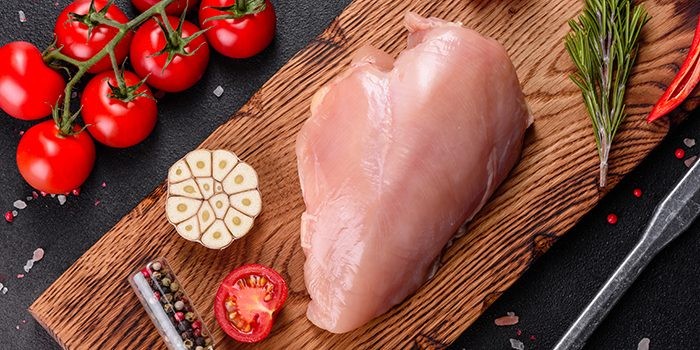
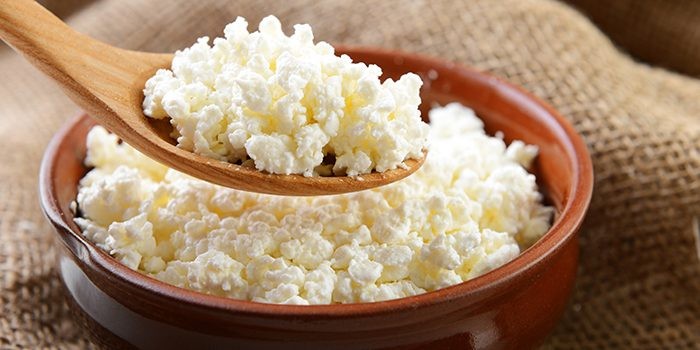

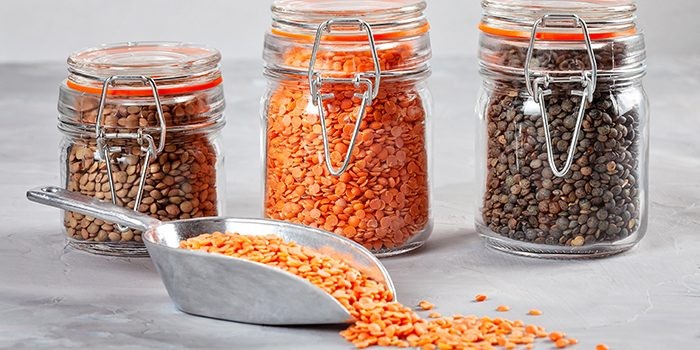
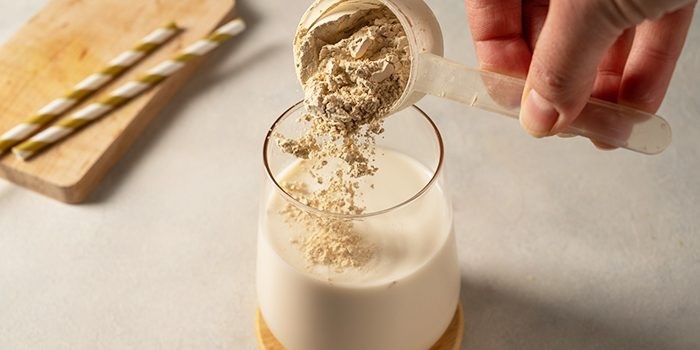
These trends reflect the growing consumer demand for convenient, nutritious, and sustainable high-protein, low-calorie options.
8. Detailed Nutritional Data on Popular Choices
Understanding the exact nutritional composition of high-protein, low-calorie foods is crucial for effective diet planning. Here’s a breakdown of some popular options:
| Food | Serving Size | Calories | Protein (g) | Fat (g) | Carbs (g) | Fiber (g) | Key Nutrients |
|---|---|---|---|---|---|---|---|
| Chicken Breast | 3.5 oz (100g) | 165 | 31 | 3.6 | 0 | 0 | Niacin, selenium, vitamin B6 |
| Turkey Breast | 3.5 oz (100g) | 157 | 30 | 1 | 0 | 0 | Tryptophan, selenium, vitamin B6 |
| Cod | 3.5 oz (100g) | 90 | 20 | 0.5 | 0 | 0 | Omega-3 fatty acids, selenium |
| Canned Tuna (in Water) | 3.5 oz (100g) | 99 | 25 | 1 | 0 | 0 | Omega-3 fatty acids, selenium |
| Greek Yogurt (Non-Fat) | 7 oz (200g) | 150 | 20 | 0 | 10 | 0 | Probiotics, calcium, vitamin B12 |
| Cottage Cheese (Low-Fat) | 0.5 cup (113g) | 80 | 12 | 1 | 3 | 0 | Calcium, B vitamins, phosphorus |
| Egg Whites | 1 Large Egg | 17 | 3.6 | 0 | 0 | 0 | Riboflavin, selenium |
| Prawns (Shrimp) | 3.5 oz (100g) | 85 | 20 | 0.5 | 0 | 0 | Selenium, vitamin B12, iodine |
| Pork Loin | 3 oz (85g) | 140 | 26 | 3.5 | 0 | 0 | Thiamine, niacin, vitamin B6 |
| Skimmed Milk | 1 cup (240ml) | 80 | 8 | 0 | 12 | 0 | Calcium, vitamin D |
| Lentils (Cooked) | 1 cup (198g) | 230 | 18 | 0.8 | 40 | 16 | Iron, folate, potassium |
| Black Beans (Cooked) | 1 cup (172g) | 220 | 15 | 1 | 40 | 15 | Fiber, iron, folate |
| Tofu | 3.5 oz (100g) | 70 | 8 | 4 | 2 | 0 | All nine essential amino acids, iron, calcium |
| Edamame | 0.5 cup (85g) | 120 | 8 | 5 | 9 | 4 | Vitamins and minerals, especially vitamin K |
| Quinoa (Cooked) | 1 cup (185g) | 222 | 8 | 3.6 | 39 | 5 | Iron, magnesium, fiber |
| Green Peas (Cooked) | 1 cup (160g) | 134 | 8 | 0.4 | 25 | 9 | Vitamins A, C, and K, fiber |
| Chickpeas (Cooked) | 1 cup (164g) | 270 | 15 | 4.3 | 45 | 12.5 | Fiber, iron, folate |
| Spirulina | 1 tbsp (7g) | 20 | 4 | 0.5 | 1 | 0 | Antioxidants, anti-inflammatory compounds |
| Protein Powder | 1 Scoop | 100-150 | 20-30 | 1-3 | 2-5 | 0-2 | Varies by brand, typically essential amino acids |
| Squid | 3.5 oz (100g) | 80 | 18 | 1 | 0 | 0 | Vitamin B12, selenium |
This data offers a comprehensive overview to help you make informed choices when planning your meals. Remember to consider your specific dietary needs and preferences when incorporating these foods into your diet.
9. FAQs About High Protein Low Calorie Foods
Here are some frequently asked questions about high protein low calorie foods:
- What are the best high protein low calorie snacks?
- Greek yogurt, hard-boiled eggs, edamame, and protein bars.
- Can I build muscle on a high protein low calorie diet?
- Yes, but you need to ensure you are consuming enough calories to support muscle growth.
- Are there any side effects of a high protein low calorie diet?
- Some people may experience digestive issues or nutrient deficiencies if the diet is not properly planned.
- How much protein do I need per day?
- The recommended daily intake is 0.8 grams per kilogram of body weight, but this can vary depending on your activity level and goals.
- Is it safe to consume protein powder every day?
- Yes, as long as you are not exceeding the recommended daily protein intake and you choose a high-quality product.
- What are some plant-based sources of high protein low calorie foods?
- Lentils, beans, tofu, quinoa, and edamame.
- Can a high protein low calorie diet help with weight loss?
- Yes, by promoting satiety and reducing overall calorie intake.
- What are some easy ways to increase my protein intake?
- Add protein powder to smoothies, snack on Greek yogurt or hard-boiled eggs, and choose lean protein sources for meals.
- Are all protein sources created equal?
- No, some protein sources are more bioavailable and contain more essential amino acids than others.
- How do I know if I’m getting enough protein?
- Track your food intake and calculate your protein intake using a food diary or app.
10. Conclusion: Embark on Your High Protein Low Calorie Journey with FOODS.EDU.VN
Incorporating high protein low calorie foods into your diet is a powerful strategy for weight management, muscle building, and overall health. By choosing lean protein sources, balancing your meals with nutrient-dense foods, and sticking to a well-planned diet, you can achieve your dietary goals and enjoy a healthier, more vibrant life. Remember to consult with a healthcare professional or registered dietitian before making any significant changes to your diet.
Ready to dive deeper into the world of nutritious eating? Visit FOODS.EDU.VN for more detailed guides, delicious recipes, and expert advice to help you achieve your health and wellness goals. Explore our extensive library of articles, cooking tips, and meal planning resources to create a sustainable and enjoyable high-protein, low-calorie lifestyle. Whether you’re looking for quick and easy meal ideas, in-depth nutritional information, or personalized diet plans, FOODS.EDU.VN is your ultimate resource for all things food-related.
For more information, contact us at:
- Address: 1946 Campus Dr, Hyde Park, NY 12538, United States
- Whatsapp: +1 845-452-9600
- Website: foods.edu.vn
